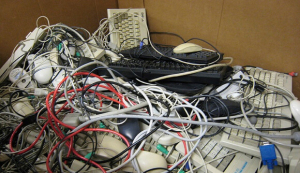
Imagination often loses.
Moore’s Law makes many things possible. Not all these things are worth doing.
I call things that aren’t worth doing junk tech.
Bitcoin is junk tech. Web3 is junk tech. Blockchain is junk tech. So is the “metaverse,” in the sense that we should all live in a virtual world rather than the real one.
Good applications can come from junk. The home shopping service I supported in 1984 became an Electronic Data Interchange (EDI) format. The map CD-ROM I worked on in 1989 became a format for geographic data. Creating lemonade from lemons is always a great opportunity.

That shouldn’t distract us from the search for valuable tech. Tech that lowers costs, or improves time to market, is valuable. Tech that replaces high-cost input with low-cost input is valuable. Tech that can increase lifespans is great.
I wrote about these opportunities almost 3 years ago now, after attending that year’s Heidelberg Laureate Forum. We’re well along on all these trends:
There is still more growth available from existing applications. We’re still in the early innings of the cloud revolution. The promise of fiber bandwidth, delivering instant answers, has yet to make its way into much of the world.
We can take the bloat out of the medical system, and the legal system, and the education system. The tools to do that already exist. We just need managers and marketers and entrepreneurs to make them fit into existing systems and, in time, replace them.
There remains great untapped value in tech. But until we get rid of the junk, a lot of tech’s money and energy will be wasted. You will be a winner if you focus on what’s real, on tech that solves real bottlenecks and creates real solutions.









